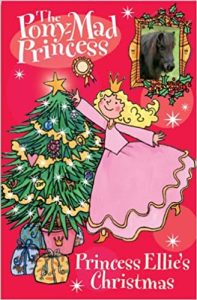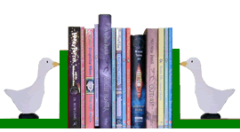A step outline is a list of all the steps in a story. It sounds simple, and it is. But it’s also a powerful tool for creating plots. I always use one when I’m writing a novel because it helps me gather my thoughts together and see the shape of my story before I start to write. It’s much easier to sort out potential problems and plot holes at this stage rather than wait until the book is finished. And once the initial plotting is finished, the step outline also provides a guide to the writing process, a bit like a road map. Because I know where I’m going, I can concentrate on the intricacies of the particular scene I’m writing.
I didn’t understand how to use a step outline properly until I read How to Write for Animation where Jeffrey Scott takes the reader step by step through the process he used to develop an episode of Teenage Mutant Ninja Turtles. That opened up a whole new way of working to me and helped turn me into a successful children’s novel writer. So, to pass on that knowledge to you, I’m going to talk you through the process of developing the storyline for one of my children’s novels. But before I do that, I’d better make two things clear:
- A step outline is not a chapter list. I don’t worry about chapters at the plotting stage and only put them in during the writing process.
- A step outline is not set in stone. I can, and often do, adapt it while I’m writing the book.
You don’t have to write a step outline from beginning to end. You can go from the end to the beginning if you prefer, or jump around putting in steps as you think of them. You can even write different step outlines for different threads of the story and then weave them together. That’s what I did when I developed the plot for Princess Ellie’s Christmas.

Warning – spoilers ahead. Stop reading now if you’re under ten, mad about ponies and haven’t already read this book.
When I was commissioned to write this book, I knew it would be the Christmas edition of my Pony-Mad Princess series. That meant readers had expectations I had to fulfill. The story had to feature Princess Ellie and her best friend Kate, the cook’s granddaughter. It had to involve at least one of her ponies and, of course, it had to be about Christmas.
Initially the step outline was completely blank. I hadn’t an idea in my head, but I knew this would have to be a little different from the standard Christmas stories. Those always include snow and I’d already written a snowy story that depended on the fact that it never snows where Ellie lives. Also there’s no magic in this series so there was no chance that Santa could fly in with his reindeer.
After a lot of thought about what makes a royal Christmas different, I suddenly remembered the Queen’s Christmas message. Suppose the King, Ellie’s dad, decided to do a Christmas broadcast live from the palace on Christmas Day. That would mean there would be a TV crew that could trigger lots of humour and story ideas, and maybe I could involve Shadow, the Shetland pony, by making him pull a trap carrying Santa (but not the real one because of the lack of magic). At this point, the step outline for this thread of the story looked like this.
- Live Royal Christmas broadcast
- Batty TV producer
- Final scene with Shadow carrying someone dressed as Santa in his trap.
That was a beginning, but I still needed to involve Ellie. I decided I wanted to make the story about giving rather than receiving presents so I started another step outline for this thread of the plot. It was rather short.
- Ellie wants to give Kate the best Christmas present ever.
To turn that into a story, I needed to give Ellie a problem but I wasn’t sure what. So the next version of the step outline was rather vague.
- Ellie wants to give Kate the best Christmas present ever.
- Something goes wrong
- She manages to do it anyway.
Now I had to play around with various possibilities until I came up with something that worked. To do that, I used the fact that Kate’s parents work abroad so they would have to get home in time for Christmas.
- Ellie orders a present for Kate
- When it arrives, it’s wrong but it’s too late to change it.
- Ellie is distraught. She’s failed
- Kate is distraught too – her parents have missed the last plane home. They won’t be back in time for Christmas.
- Ellie arranges for them to fly home in the Royal plane
- Kate’s parents are the best present ever.
With that thread almost sorted, I went back to the original step outline about the Royal broadcast. I was already fascinated by special effects and had written a book about them. Suppose there was a special effects team with the TV crew. Could they make the story end with a snow scene after all? But for that to make a satisfactory ending, it had to somehow be tied into the story. So I made Ellie wish for a White Christmas – a wish that couldn’t possibly come true completely because of the lack of magic.
- Ellie wishes for snow
- Batty TV producer finds out
- Live Royal Christmas broadcast
- Final scene with Shadow and his trap carrying someone dressed as Santa through a winter wonderland created by the special FX team. Surprise for Ellie.
That sort of worked, but it had a flaw. Ellie didn’t solve her own problem (the lack of snow) – the producer did it for her – and that’s a sure fire way to come up an ending that’s not quite as good as it could be. To make it more satisfactory, I needed Ellie to do something to trigger the snowy scene, and I settled on her doing a good turn so the snow was her reward.
- Ellie wishes for snow
- Rehearsal for Christmas message is boring
- Ellie suggests someone dresses up as Santa and arrives in Shadow’s trap – a surprise visit that no one else knows about
- Grateful TV producer finds out about Ellie’s wish.
- Christmas morning. No snow. Ellie’s wish hasn’t come true.
- Live Christmas broadcast.
- Final scene with Shadow bringing Santa through a fake winter wonderland. Surprise for Ellie.
Now I was sure both step outlines worked, I had to weave them together. Then, once I had the basic outline of the whole book, I was able to add intermediate steps and extra detail to make the story even stronger until I was finally ready to start writing. (The final version had 48 steps for a 7000 word book.)

Comments are closed.